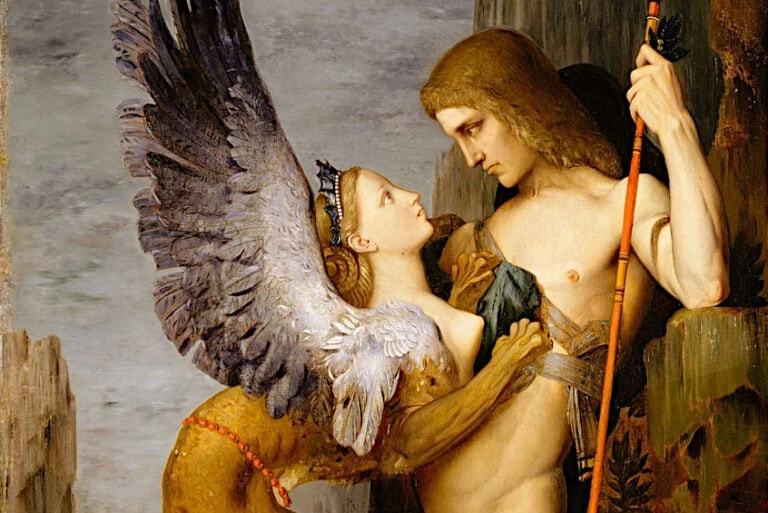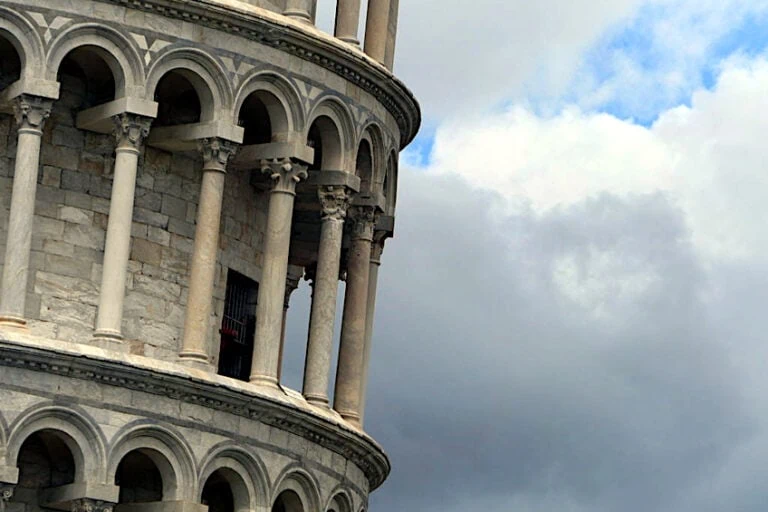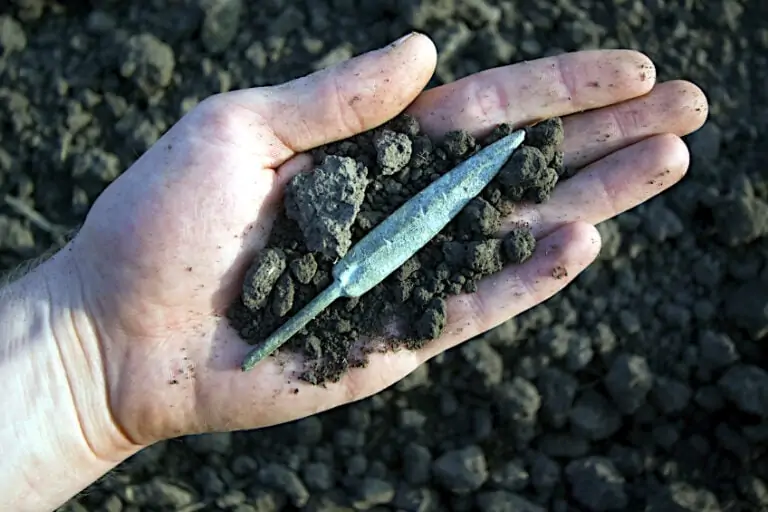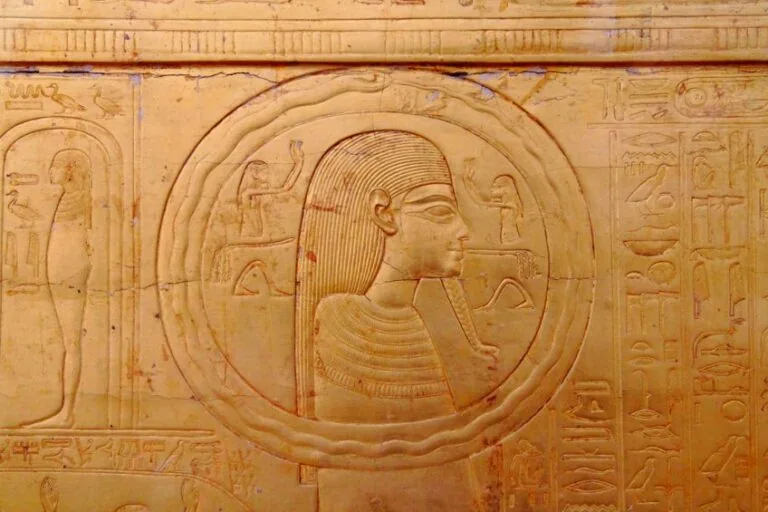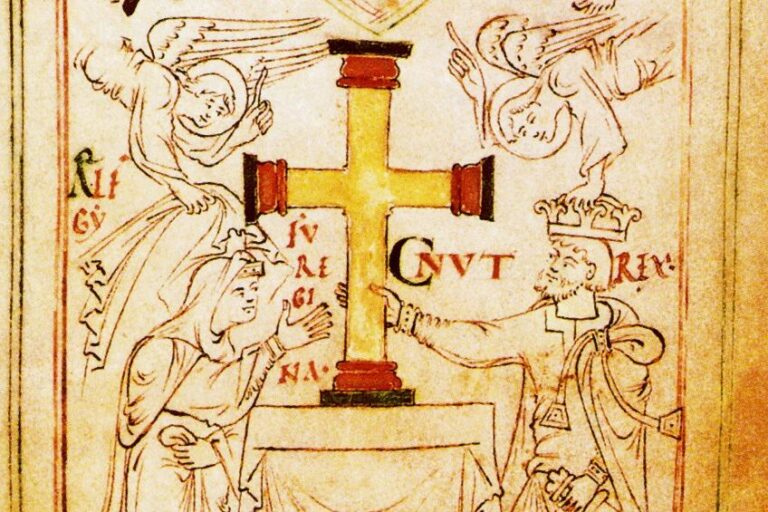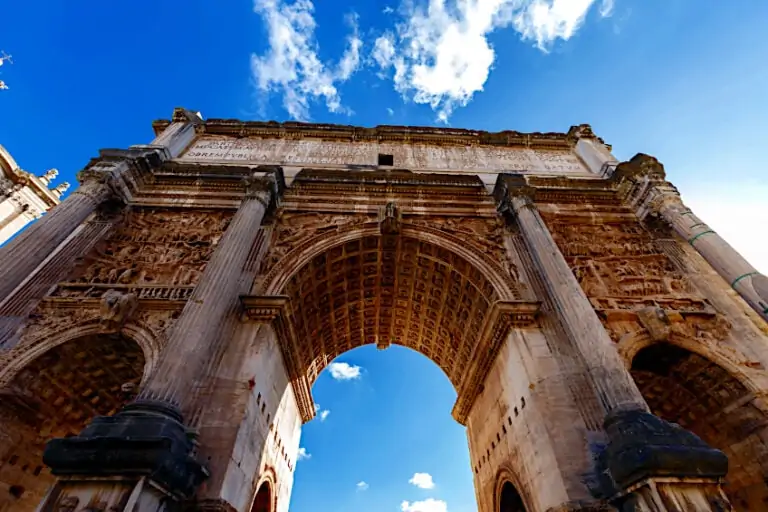Terracotta Warriors From the Mausoleum of the First Qin Emperor
They say that you can’t understand where you’re going until you understand where you’ve come from. In a greater historical sense, the people of China have a rich history to look back on, and where there’s history there are artifacts that embody that time. China has no shortage of artifacts from their imperial error, and arguably the most renowned of all these artifacts are the terracotta warriors from the mausoleum of the first Qin emperor. There have been countless documentaries and exhibitions of some terracotta figures, but we’d like to provide a more holistic view of the terracotta warriors from the mausoleum of the first emperor, its creation, historical significance, and what it means to the people of China today.
Who Created the Terracotta Army?
The terracotta army is almost incomprehensibly big. There have only ever been pieces of the entire composition on display, which is a shame considering the time and effort that the creators of the warriors put into them. Who created the terracotta warrior you ask?
Well, the subjects of the first Qin emperor were ordered to create this piece in the year 2133 of China’s imperial era.
While everyday people tend not to think about death all that often when you’re an all-powerful ruler with loads of enemies and fake allies like emperor Quin, it tends to be a recurring thought. This is one of many reasons that he ordered the construction of his mausoleum to begin as soon as he took the throne, which was all the way back in 246 BCE.
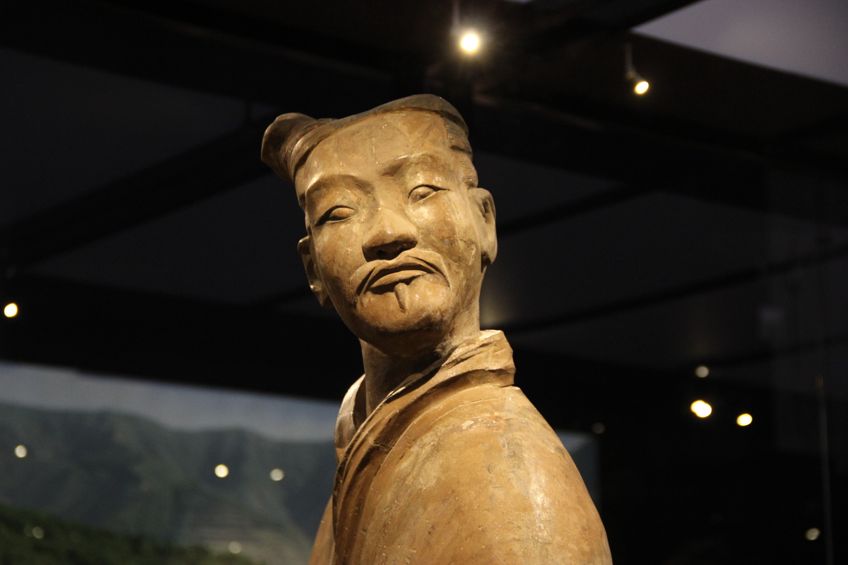 Head of a Terracotta Soldier (246 BCE);JKestilä, CC BY-SA 3.0, via Wikimedia Commons
Head of a Terracotta Soldier (246 BCE);JKestilä, CC BY-SA 3.0, via Wikimedia Commons
To make things even stranger, at the time that he ordered the construction of his mausoleum the king was only 13 years old. This left him with little to no experience and/or interpersonal skills to speak of, and as a result, he delegated supervision of the construction of his final resting place to various officials. These overseers would manage everything from labor to materials.
There are loads of things to look at when viewing the terracotta army, considering that over 700,000 people were involved in the construction of the army and the tomb itself. This was a herculean task, and it took all of those people around 35 years to complete the emperor’s request. Once completed, the Terracotta Warriors from the mausoleum of the first Qin emperor were the talk of the country.
People didn’t just show up one day and start making clay soldiers though. China’s prime minister at the time Li Si designed the original concept and took charge of the planning. Once the planning was completed, Zhang Han the official supervisor of the project (and senior military general) ben delegated the necessary labor for the army to come to life.
How much labor exactly? Well, including all of the skilled laborers involved in the finer details, there were over 700,000 worker presents on the project. Even with this enormous workforce it still took around 36 years for the entire mausoleum to be built, at which point the emperor was well towards the end of his life.
Considering the scale of the project you might be wondering what the cost of such a herculean task would be. Well, the cost of the construction and materials used to create the emperor’s final resting place is unknown but it has been said that the workers were not paid much, which is to be expected under the authoritarian regime that emperor Qin held.
The Crafters of the Terracotta Soldiers
As we mentioned previously there were many people who worked on the design of the terracotta soldiers, but there were skilled laborers and those who were there to do unskilled work such as moving soil or assisting with logistics and resource management. There were so many skilled workers in fact, that it would have been challenging to keep track of them without a trick developed by the supervisors of the site.
The best illustration of this is the team of potters tasked with furnishing the mausoleum with fine ornate pottery. There were both imperial craftsmen that served the emperor directly and folk craftsmen who were commissioned by the supervisors of the site to create works for the mausoleum upon its completion.
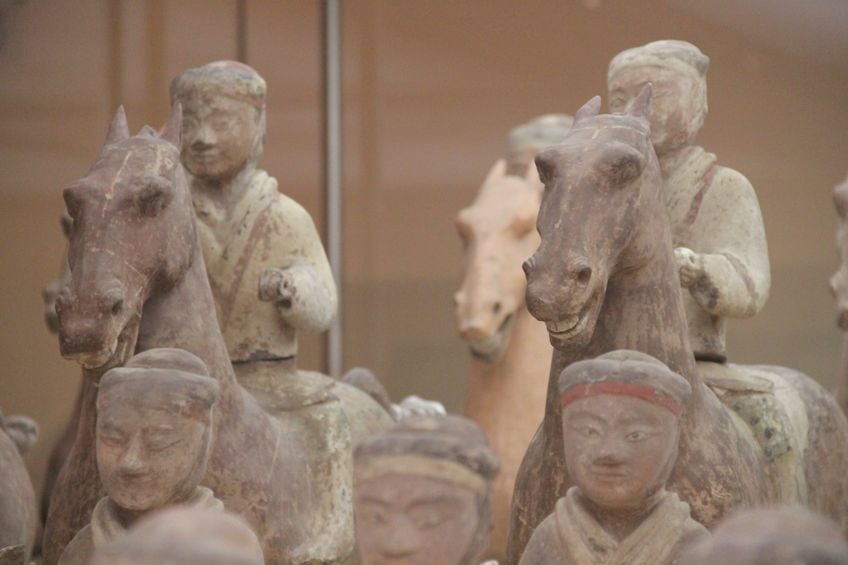 Western Han Terracotta Army & Cavalry (246 BCE); Gary Todd, CC0, via Wikimedia Commons
Western Han Terracotta Army & Cavalry (246 BCE); Gary Todd, CC0, via Wikimedia Commons
How did they distinguish their works from one another? Well, in situations like this the simplest approach is often the most effective, that’s why all of the crafters involved in the construction and decoration of pottery for the mausoleum would simply etch their names into their workpieces. The same went for those who made figurines and reliefs for the space.
By allowing each crafter to brand their work with their name, not only was it possible to identify works of superior and inferior quality, but it allowed the government to manage the entire handcraft industry, set going rates for work, as well as ensure that only the best crafters worked on the king’s mausoleum.
Now, finding a single person even with the internet can be a challenge, so you might be wondering how you could find one in 700,000 crafters with just their name. Well, supervisors thought of this and in some instances, the artist’s name as well as their hometown, village, or city was added to the piece to avoid any confusion.
One would think that with so many artists involved in the construction of such a monumental artwork that there would be loads of inconsistencies in the style and composition of the workpieces, but in actuality, the style, composition, and even the arrangement of the individual elements are quite uniform and present a harmonious aesthetic throughout.
Terracotta Warriors From the Mausoleum of The First Qin Emperor: A Deeper Look
Now that you know a bit about who this masterpiece was made for and a bit about how much it was made, let’s have a look at a few of the key elements of this piece as well as why it was made, as well as the cultural and spiritual significance this work of art represents to the people of China and the world at large.
| Culture of Origin | Ancient Chinese |
| Date of Creation | Began construction in 246 BCE |
| Date of Discovery | March 29th 1974 |
| Overall Size | 8000 figures spanning 25,380 square meters |
| Number of Individual Pieces | 8,000 figures |
| Materials Used | Terracotta clay |
| Current Location | Emperor Qinshihuang’s Mausoleum Site Museum, Xi’an, China |
| Historical Significance | Illustrates the daily lives of the people of the Qin dynasty |
| Spiritual Significance | Protection of the first emperor Qin in the afterlife |
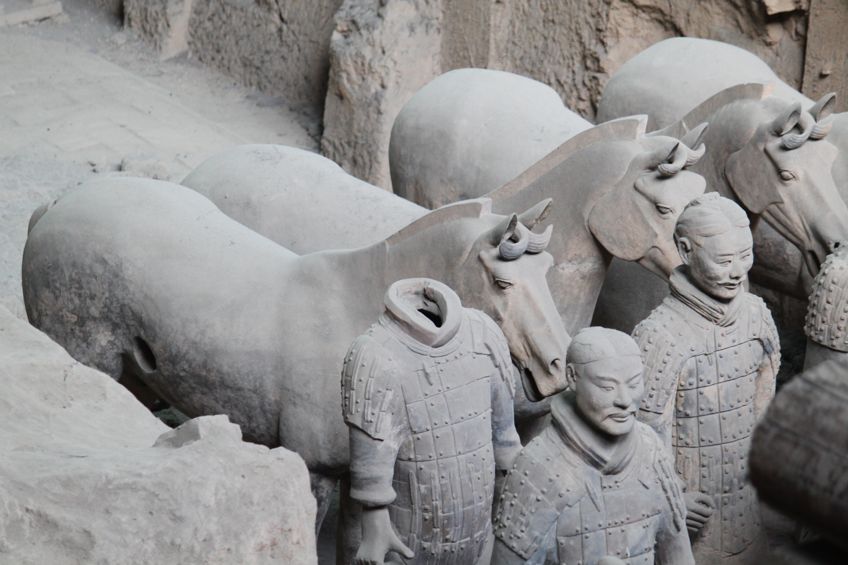 Qin Terracotta Warriors (246 BCE); Gary Todd, CC0, via Wikimedia Commons
Qin Terracotta Warriors (246 BCE); Gary Todd, CC0, via Wikimedia Commons
Why Were the Terracotta Soldiers Created?
Now, considering the labor and resources used to create this work of art you might be asking yourself why it exists in the first place. Why were the terracotta soldiers created then? Well, they were created to furnish the tomb of the emperor and serve him upon his (depending on who you as) untimely death.
This practice is actually reminiscent of the ancient Egyptian belief that if a pharaoh was buried with his riches, servants, and pets, he would be able to enjoy them in the afterlife as well. This is pretty much the case with the first emperor Qin too, but unlike the Egyptian practice, he decided to take a battalion-sized regiment with him to the afterlife in case he needs some muscle.
Essentially, the entire tomb was intended to serve as a means to ensure that the emperor Qin received the exact same treatment in the land of the dead as he did in the land of the living. Whether it be food, servants, pottery, combatants, music, and even concubines, the emperor has had everything buried with him that he might need for the rest of eternity.
If you’d like an idea of just what the first emperor of China would need in the next life, consider that part of the collection includes 670 horses of varying sized and breeds, 8000 soldiers of varying ranks and sizes, and about 130 chariots, and spread between these are figures like renowned strong men, musicians, and the many concubines on the first emperor.
Besides the comfort of the king, once he entered the afterlife, the creation of the terracotta army was also to commemorate the unification of China’s various cities and towns. This was the first time that the region had been united under one ruler, and under his rule, there were monumental advancements in all aspects of China’s society.
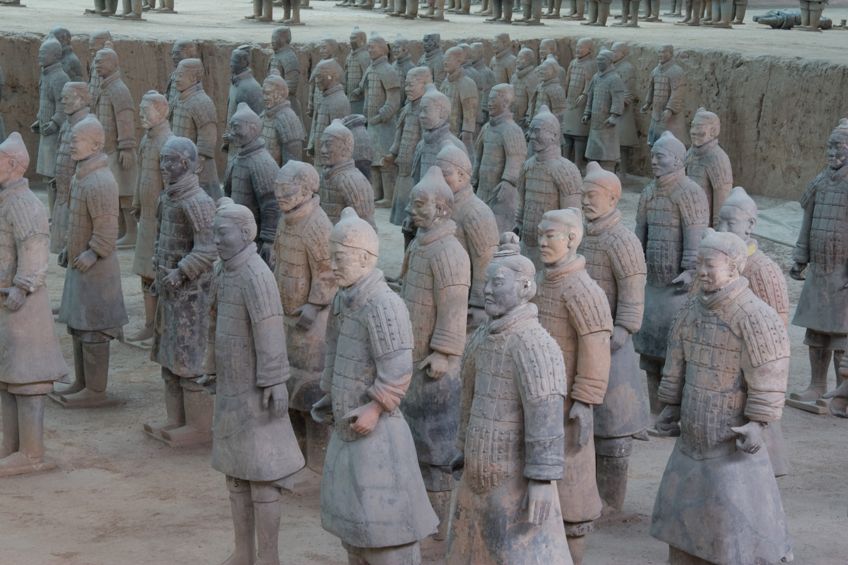 Terracotta Army Pit 1 (246 BCE);Maros M r a z (Maros), CC BY-SA 3.0, via Wikimedia Commons
Terracotta Army Pit 1 (246 BCE);Maros M r a z (Maros), CC BY-SA 3.0, via Wikimedia Commons
While it might seem a bit excessive to have representations of an entire army on display to commemorate the occasion, the emperor wanted to immortalize all the warriors who secured his victory and ascension to the throne through the elimination of all of the competition in the regions he had conquered and subsequently unified as one.
Substitutes for Sacrificial Offerings
As you can see there were many reasons for the creation of the terracotta army, but one of the most important is how the figurines were used as a much-desired substitute for human sacrifices. Under previous rulers, there were certain instances where human sacrifices were required by the population under said parties’ rule.
The mausoleum of the first Qin emperor was not only a means of honoring the warriors who fought for the unification of China’s states and to honor the new emperor, but the figures also served as a sort of offering towards the emperor himself. This was (understandably) considered to be better than being killed and laid to rest with the emperor in the event of his death.
The death toll and the toll on the families of those sacrificed probably had a lot to do with much of the population of China at the time supporting the emperor’s coronation. This, in combination with great social and economic reform, all played a huge part in the decision to create the mausoleum of the first Qin emperor.
The Army Pits of the Terracotta Warriors
The Terracotta army was initially an accidental archaeological find. A group of farmers was working the land on top of the site when they unknowingly penetrated the ceiling of one of the enormous pits that house both the army and the other artifacts. Archaeologists refer to these pits as army pits, of which there are four that house the army figures.
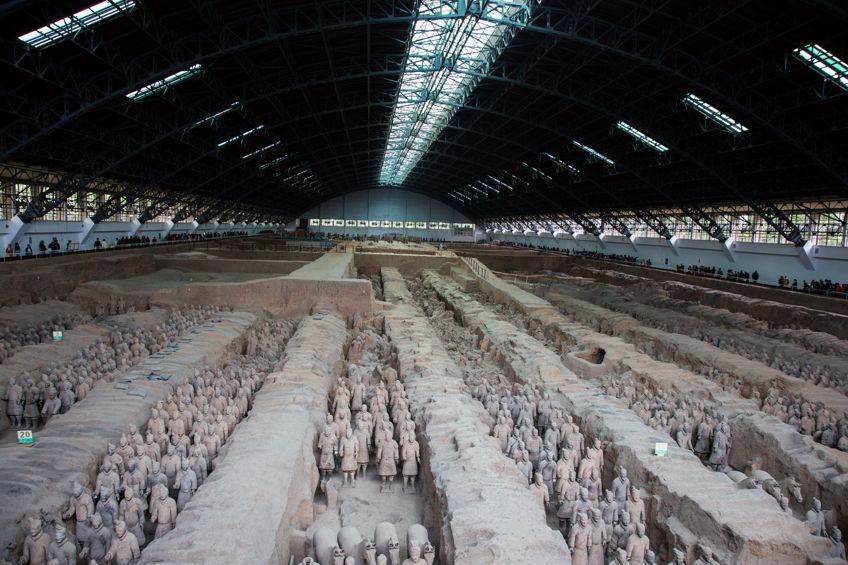 Terracotta Army (246 BCE); Jmhullot, CC BY 3.0, via Wikimedia Commons
Terracotta Army (246 BCE); Jmhullot, CC BY 3.0, via Wikimedia Commons
While the final resting place of the emperor himself had been well known for quite some time the terracotta army was a brand-new discovery since there was no mention of this monumental structure in written historical documents. As a result, the excavation and discovery of the massive clay army was a surprise not only to the farmers and nation but to the entire world.
Terracotta Army Pit Number One
As we mentioned previously there are four pits, the first of which is the largest and houses the majority of the terracotta soldiers. The walls of this pit are lined with huge wooden logs to prevent the land from sliding inwards, and before when it was discovered it had an absolutely massive wooden canopy covering the soldiers. This resembles an underground bunker, which required ramps and lanterns to load the terracotta warriors inside.
The first pit is divided into 11 corridors, all of which are lined with figurines up in battle formation. The figures are all evenly spaced, which is quite the feat considering just how many soldiers line this pit. From a distance, the soldiers appear uniform in appearance (as a king would have liked), but upon closer inspection, it’s clear that each warrior’s armor and facial features have been individually tailored.
The construction of these pits is actually believed to pre-date the ascension of the emperor himself. While the production of the terracotta warriors is believed to have begun sometime near 247 BCE, the digging and lining of these large pits are believed to have begun some time earlier, roughly around 221 BCE.
The construction of these pits was such a high priority that drastic changes were made to the population or order to complete them as soon as possible. How drastic you ask? Well, considering that 700,000 convicted criminals and forced laborers were forced to live and work near the site where they eventually moved 70,000 cubic meters of sand and rock, we think the changes were quite severe.
As we mentioned previously the first pit is by far the largest and houses around 1,900 infantrymen, as well as around 22 chariots pulled by four horses, which carry even more soldiers. The soldiers can be differentiated by rank, hair, and armor, all of which have been individually crafted by hand. All soldiers held very real weapons, and the total number of frontline infantry displayed in this pit is around 6,000, illustrating the importance of sheer numbers in times of war.
Terracotta Army Pit Number Two
While the first pit was very much devoted to infantrymen, the second pit of the terracotta army is a bit of a mixed bag. This pit highlights the importance of support and long-range capabilities within a battalion, featuring archers (both kneeling and upright), spearmen, chariots, and a contingency of cavalry forces to re-enforce the unit’s reach.
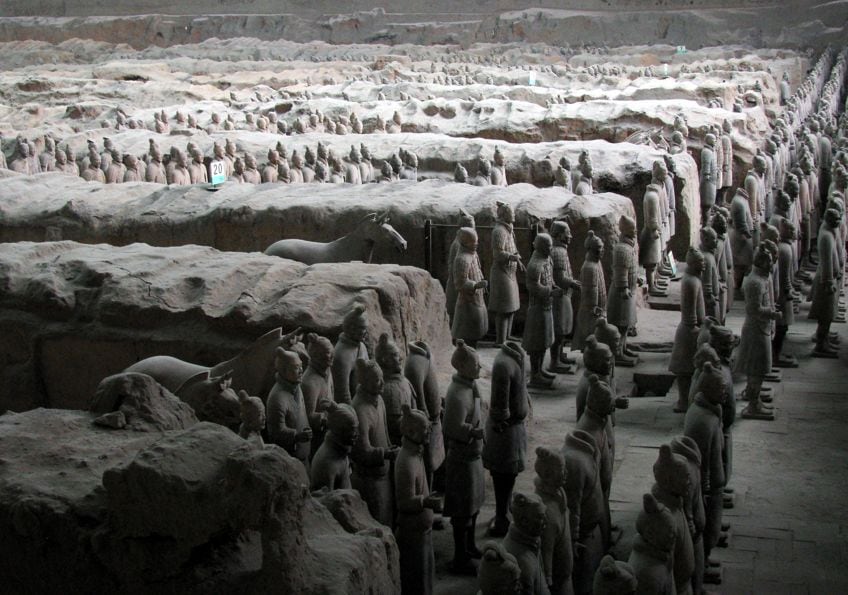 Terracotta Army (246 BCE); Peter Dowley from Dubai, United Arab Emirates, CC BY 2.0, via Wikimedia Commons
Terracotta Army (246 BCE); Peter Dowley from Dubai, United Arab Emirates, CC BY 2.0, via Wikimedia Commons
Section One (East End)
This pit is actually split into four smaller sections, all of which house a (relative) handful of soldiers, chariots, and other artifacts. The first of these sections that are located to the east of the block houses a myriad of soldiers including two rows of archers and spearmen both standing and kneeling, all proceeded by six columns of archers.
Again, some of them are standing, and others are kneeling.
Section Two (Southern End) and Section 3 (Center)
In modern military terms, this pit would be considered the armor core. What exactly does this refer to? These days, it refers to armored personnel carriers (APCs), tanks, and vehicles reserved for mechanized infantry. Emperor Qin didn’t have APCs though, so instead, he furnished his army with 63 four chariots, each drawn by two horses, charry two riders, and two assistants.
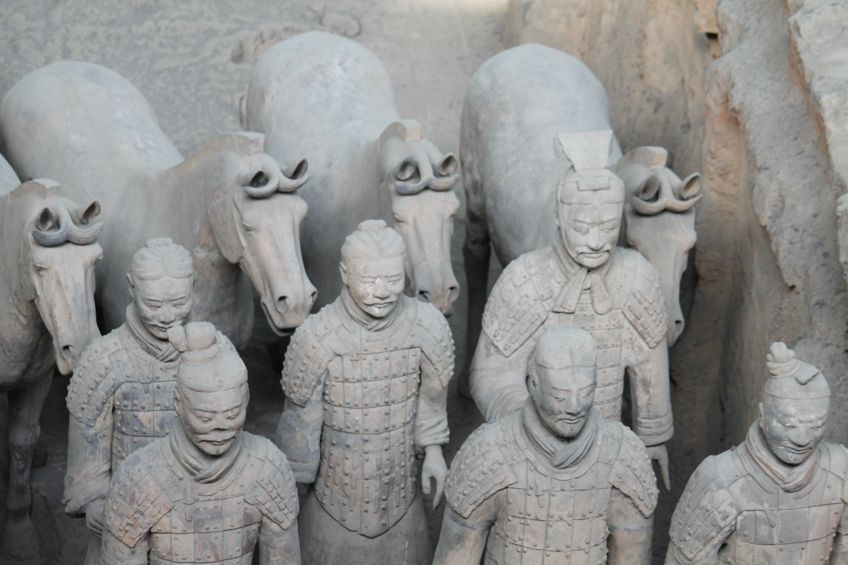 Qin Terracotta Warriors (246 BCE); Gary Todd from Xinzheng, China, CC0, via Wikimedia Commons
Qin Terracotta Warriors (246 BCE); Gary Todd from Xinzheng, China, CC0, via Wikimedia Commons
The third section of the second pit contains a bit more than just some chariots and their riders though. In addition to 19 chariots, this section houses a cavalry force and around 264 infantry soldiers to boot. A small detachment compared to the size of the first chamber, but a vital part of the battalion, nonetheless.
Section Four (Northern End)
Section four of the second pit is a bit of a special one. We’ve mentioned the presence of cavalry soldiers previously, and at this point in Chinese history, it was a relatively new concept in warfare. In fact, it was the use of cavalry in the battles that took place for the unification of China that granted the imperial army the advantage they needed to claim victory over resisting forces. This section houses cavalrymen almost exclusively, with around 108 cavalrymen and their saddled horses represented in the relatively small space.
The horses are saddled, and the soldiers themselves are wearing armored jackets and short garb to ensure that their range of motion was not affected in batter, as well as when they were mounting and dismounting their horses.
Terracotta Army Pit Number Three
The last pit of the terracotta army is by far the strongest. Unlike the other pits which are largely square in shape, the final pit is shaped like the letter “U”. The pit houses around 42 armored infantrymen in the Southern section and around 22 in the Northern section. The groups face one another, while a small number in the east face the wall, as if waiting to depart the chamber, or for a commander to enter. This final group faces a raised platform with a ramp leading up to it lies a chariot. This chariot is unlike some of the others we have mentioned previously, as it appears that the wood used in its construction has been intricated decorated with geometric shapes, and the wood itself has been treated to enhance its appearance.
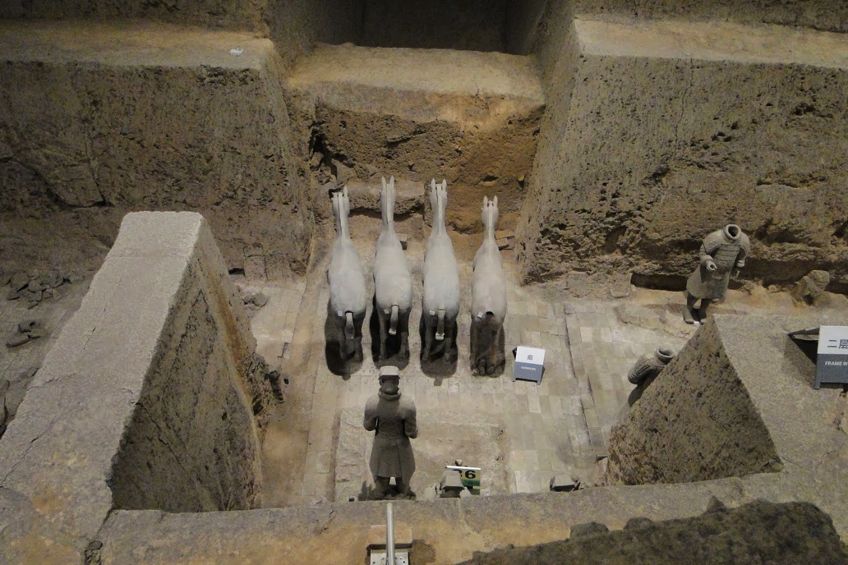 Terracotta Army (246 BCE); Leon petrosyan, CC BY-SA 4.0, via Wikimedia Commons
Terracotta Army (246 BCE); Leon petrosyan, CC BY-SA 4.0, via Wikimedia Commons
The purpose of this chariot has been debated by loads of scholars. The majority of academics agree that the chariot is designed to symbolize the presence of the emperor himself, hence the elaborate inlays and decorations on the chariot. The shape and type of soldiers displayed in this chamber seem to back up this claim.
Terracotta Army Pit Number Four
Strangely, pit number four is just that, a pit. Unfortunately, due to what could be a number of factors, pit number four is entirely empty. Many have speculated that this is because of emperor Qin’s eventual death, or because the dynasty itself simply ran out of the time and resources needed to complete the project.
The symbolism of the Emperor’s Tomb
Symbolism is seen throughout the terracotta warriors and the tomb itself. As we mentioned previously, the practice of burying a ruler with their belongings, servants, and concubines was pretty common in ancient Chinese culture and many other cultures all over the world. As we’ve established, this is to ensure said rulers’ comfort in the afterlife.
This doesn’t just include manpower though, if you look carefully there are loads of other items that line the walls of the final resting place of the first emperor of the Chinese dynasty. The idea was that the ruler in question, in this case, Qin of the Chinese dynasty, would have everything they used in their everyday life once they had passed on.
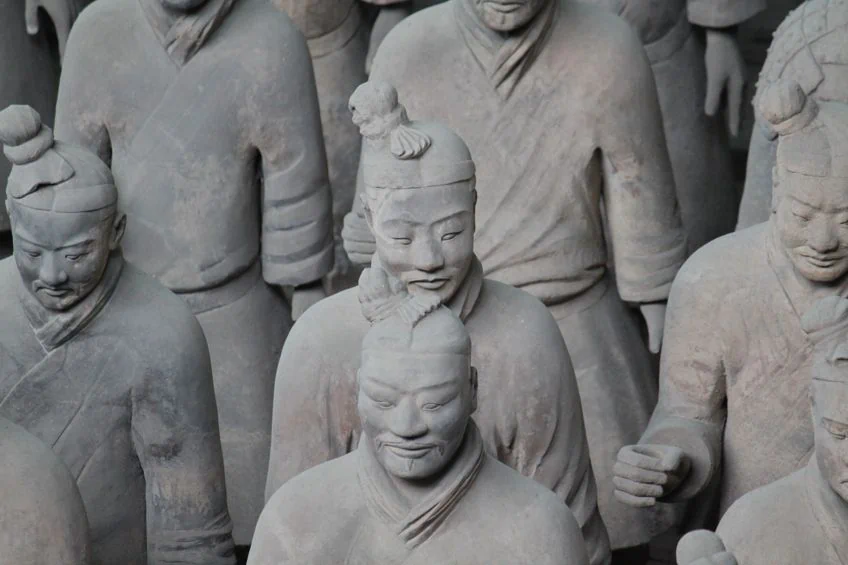 Qin Terracotta Army (246 BCE); Gary Todd from Xinzheng, China, CC0, via Wikimedia Commons
Qin Terracotta Army (246 BCE); Gary Todd from Xinzheng, China, CC0, via Wikimedia Commons
While some of the items in the tomb might be fascinating to us now, back then items like utensils, bowls, chairs, vases, and artwork would have seemed mundane aside from their quality. The tomb itself was also designed with this in mind, featuring entire rooms dedicated to particular applications whether they be riches, artwork, food, servants, rest, and/or storage.
This tomb was very unlike the tombs of other leaders though. As the first emperor of China, Qin was afforded one of the only examples of life-size replicas of his army and staff, and even though there were leaders who tried to emulate this elaborate burial arrangement after his death, none matched the scale or complexity Qin shi Huang did.
Now that you know what the Terracotta Army is, how it was made, who it was made by, and what made emperor Qin shi Huang such a memorable leader in both Chinese and world history, it’s time for you to get out there and put your newfound knowledge to the test. Chinese history and culture are rich with interesting stories, infrastructure, and people, and we’d encourage you to explore it even more at your own pace.
Frequently Asked Questions
Why Was Qin Shi Huang So Special?
Emperor Qin was the first emperor of imperial China. He gained fame by unifying all of the regions of China under one leader over the course of his lifetime. His other claim to fame is the enormous terracotta army with which he was buried.
Does the Terracotta Army Still Exist?
The terracotta army does still exist. The elaborate display of clay soldiers, chariots, and other artifacts are currently on display at the Museum in Xi’an, China. Parts of this collection are sometimes lent out to other museums across the world.
Who Owns the Terracotta Army?
While today the army belongs to the people’s republic of China when it was initially created the terracotta warriors belonged to emperor Qin Shi Huang, the first emperor of a unified China and the one who was buried alongside the terracotta army itself.

I am deeply passionate about history and am constantly fascinated by the rich and complex stories of the past. As the editor-in-chief of learning-history.com, I have the opportunity to share this passion with a wide audience through the creation and distribution of engaging and informative content about historical events, persons, and cultures. Whether it’s through writing articles and blog posts or creating videos or podcasts, I strive to bring the past to life in a way that is both accurate and enjoyable. My expertise in history, combined with my strong writing and communication skills, allows me to effectively communicate complex historical concepts and make them accessible and interesting to a wide range of readers. I am truly grateful for the opportunity to share my love of history with others through my work on learning-history.com.

